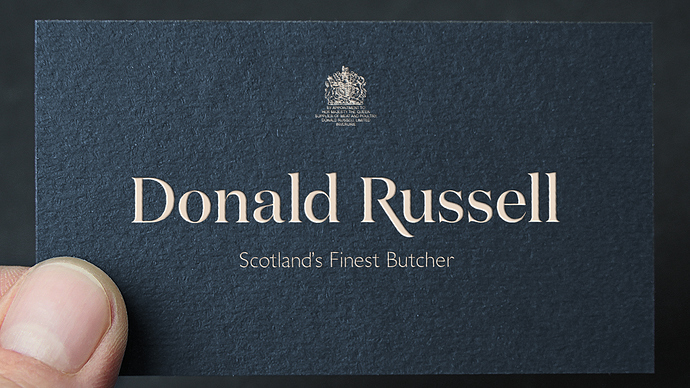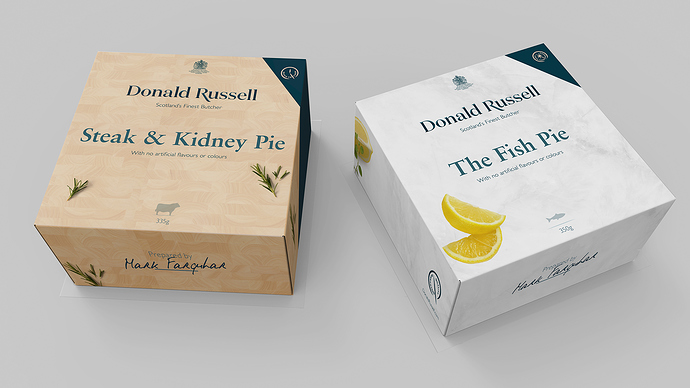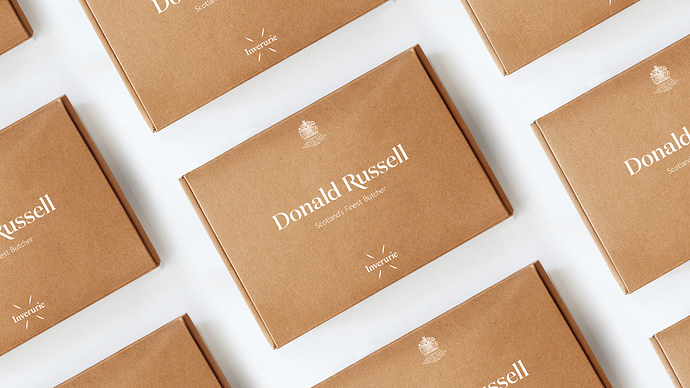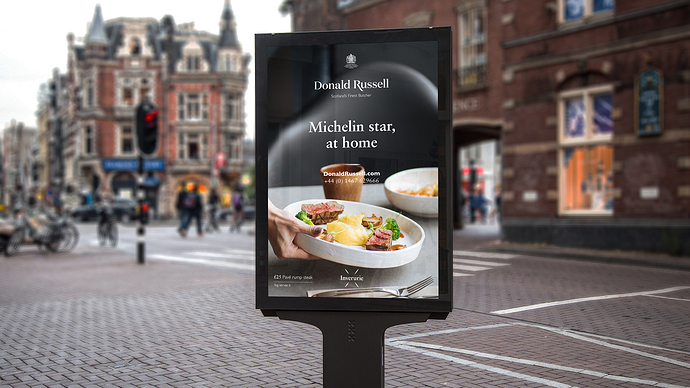Award-winning Donald Russell appointed Conran Design Group to create its new visual identity. Launching today, Britain’s leading mail-order and online butcher, needed a new visual identity and brand refresh to attract new customers online.
The challenge was to create a brand experience that would appeal to consumers who care passionately about the provenance of their food and are motivated by taste and sourcing. The objective being to retain the loyalty of existing customers, while attracting a wider audience.
The creative solution had to bring the brand’s existing positioning, ‘Scotland’s Finest Butcher’, to life, while reflecting the personality and values of the business with a new logo and visual identity (colour palette, photography style, tone of voice, typeface, visual language).
Conran created a visual expression of the positioning that combined appetite appeal and a sense of passion for the art of master butchery. As well as a visual identity toolkit, Conran defined how this would work across all brand communication channels including, website, acquisition materials and packaging, supplying creative assets and brand guidelines to ensure consistency across the roll out. In addition, Conran ran brand training days with the marketing team and its partners, to ensure best practice during implementation.







 ). Whether good or bad our history is a great factor in who we are. Knowing where we came from is important to understanding more clearly where we are going or want to go. I see history as sort of an anchor point for society and culture, to cast it all away to the point of forgetting I fear will eventually result in “running upon the rocks” and repeating the same mistakes again. I see no good coming from tearing down old landmarks, changing old names, essentially erasing the past.
). Whether good or bad our history is a great factor in who we are. Knowing where we came from is important to understanding more clearly where we are going or want to go. I see history as sort of an anchor point for society and culture, to cast it all away to the point of forgetting I fear will eventually result in “running upon the rocks” and repeating the same mistakes again. I see no good coming from tearing down old landmarks, changing old names, essentially erasing the past.